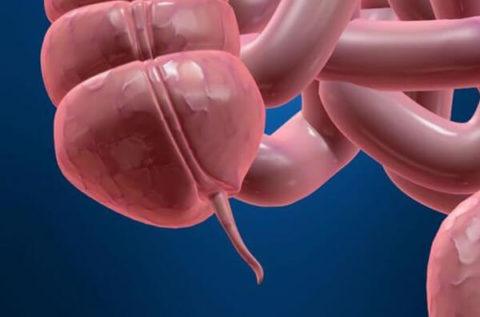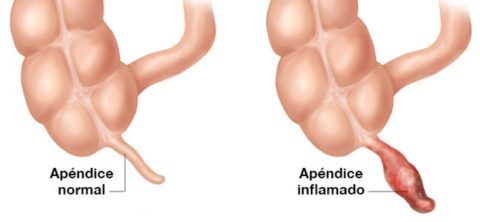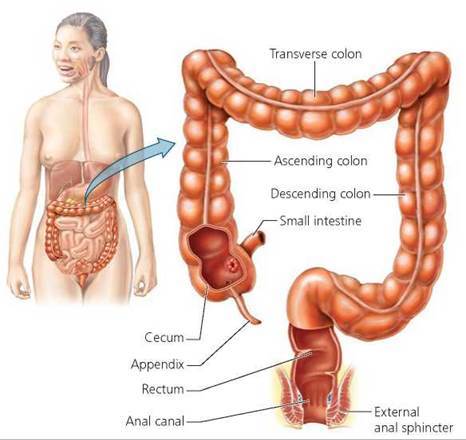Gangrenous appendicitis: Causes, symptoms and diagnosis
The appendix is an organ that is at the beginning of the large intestine , in the lower right quadrant of the abdomen, its shape resembles a worm and its color is rosy. . For this organ, for causes that we will now see, can become inflamed and even gangrenous, causing terrible pains that can lead an individual to death. It is not a disease to be careless, that's why in this blog we have entitled gangrenous appendicitis: Causes, symptoms and diagnosis , we will learn more about this disease, what are its symptoms, what or who cause.

What is Gangrene Appendicitis?
As we have mentioned the appendix is located at the beginning of the large intestine, its interior is covered with lymphoid follicles. The usefulness of the appendix or its function is unknown in the human being, it is believed that it can be an evolutionary vestige possibly part of the muscles that could have moved the coccyx bone.
The inflammation of the appendix or appendicitis has a greater relevance between an arch of population between 10 and 30 years , although the reason is unknown as it is more frequent among the male population than female despite there being no hormonal factor that propicie.

Inflammation of the appendix is not the main problem when we speak of appendicitis, the risk arrives if we let it continue to evolve, after the inflammation can come first the gangrene of the tissues and then the gangrene of the whole organ, where literally the appendix rots inside the abdomen. The consequences of this is a peritonitis and therefore a risk to life.
Causes of Gangrene Appendicitis

Appendicitis or inflammation of the appendix occurs as a result of an obstruction of the internal canal of the appendix. The most common causes are:
- Hyperplasia of lymphoid follicles: It is the most common cause of appendicitis, when the appendicular lymphoid follicles are infected by microbes, especially Yersinia, These become inflamed and with inflammation the duct obstruction occurs.
- Appendicolite or fecalite: Occurs when the fecal mass on its way to the anus, can be partly stuck in the duct or appendicular lumen, causing inflammation of the appendix.
- Foreign bodies: Intake of a foreign body, whether accidentally or not, may also obstruct the duct and we already know the results.
- Tumor: The appendicitis caused by tumors is not one of the most common causes but it may be that the tumor is in the same appendix or in the colon.
Symptoms of Gangren Appendicitis osa
Sometimes the first symptoms, the symptoms typical of appendicitis in its first phase, go unnoticed confused with other types of symptoms, in women often confused with pain related to the menstrual cycle.

Pain usually develops during the first day, after the nerve endings lose sensitivity and therefore the pain disappears. At this time, our symptoms also disappear and we believe that the danger has passed. Nothing is further from reality, the disease has begun its path and will not stop.But if the child can not express himself because he does not speak, a characteristic feature is that the baby will cry out of hand and remain totally immobile . In the case of children ultrasound is usually the most used method of diagnosis.
Why gangrenous appendicitis is dangerous
Within appendicitis, different stages can be established:
Stage 1.: Simple or catarrhal appendicitis
It is the first state of the ailment, it occurs when the light of the appendix becomes obstructed in such a way that the mucus of the intestine can not flow and begins to accumulate. The accumulation of mucus causes the proliferation of bacteria which triggers inflammation of the appendix or simple appendicitis.
Stage 2 .: Phlegmonous or fibrinous appendicitis
With the inflammation and the pressure that is exerted inside the appendix, there is a distension of this, until there comes a time when the pressure is so high that the blood can not arrive correctly at this organ.

Stage 3 .: Gangrenous appendicitis
At this point, the walls that form the appendix begin to weaken as a result of lack of irrigation, this coupled with pressure, parts of the walls begin to blacken, become necrotic, gangrenous, even segregating pus.
Stage 4 .: Perforated appendicitis
The next step is the rupture of the gangrenous walls, releasing both the pus and the feces that are inside this organ and pouring them into the stomach, the result is peritonitis, urgent surgery and hope to have arrived on time.
You may also be interested :
At BlogMedicina we hope that you have been helpful reading this article, no doubt knowing the symptoms of diseases such as appendicitis, is as we have read, vital. For this reason we have selected some links on our page that are sure to interest you.
- Acute appendicitis, general aspects and epidemiology
- Crohn's disease


